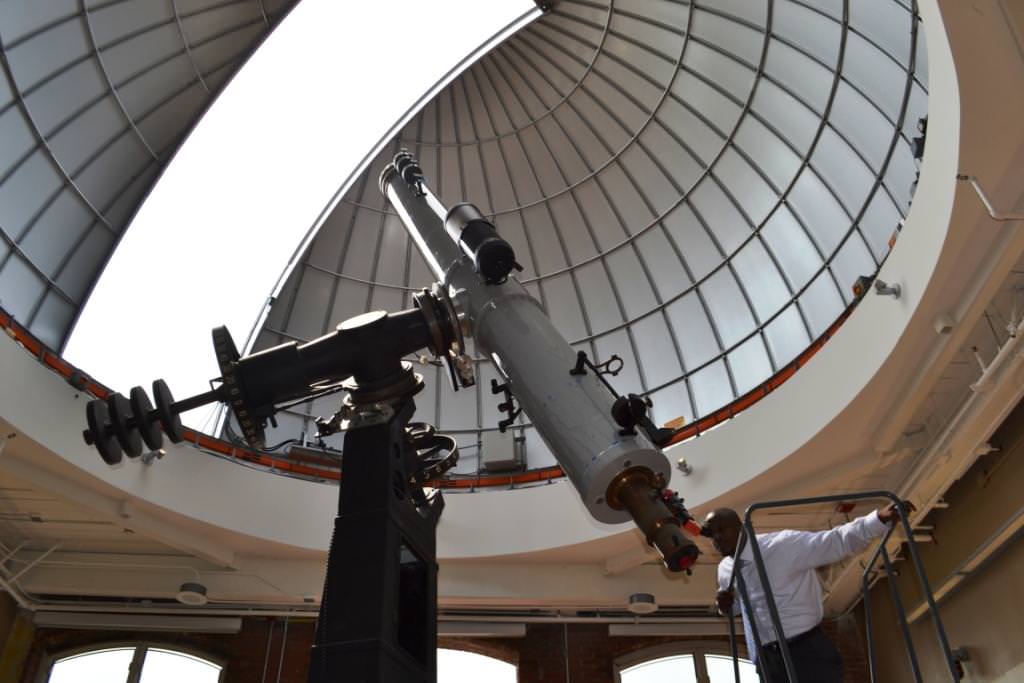Seeking out science and astronomy in South Carolina? You’re in luck, as we’re pleased to report the South Carolina State Museum’s brand-spanking new planetarium and astronomical observatory opened to the public earlier this month. Part of a 75,000 square foot expansion project dubbed Windows to New Worlds, the renovation puts the museum on the cutting edge of STEM education and public outreach. And not only does the new expansion include one of the largest planetariums in the southeastern U.S., but it also features the only 4D theater in the state of South Carolina. The observatory, planetarium and brand new exhibits present a fascinating blend of the grandeur of astronomical history and modern technology.
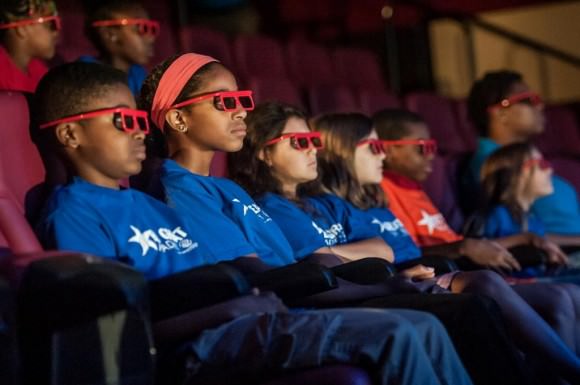
“What we have built represents a quantum leap forward for South Carolina in the areas of cultural tourism, recreation and especially education,” said executive director of the South Carolina State Museum Willie Calloway in a recent press release. “Our new facility is building opportunity — opportunity for students to thrive, opportunity for our economy to grow and opportunity for our guests to be entertained in new ways.”
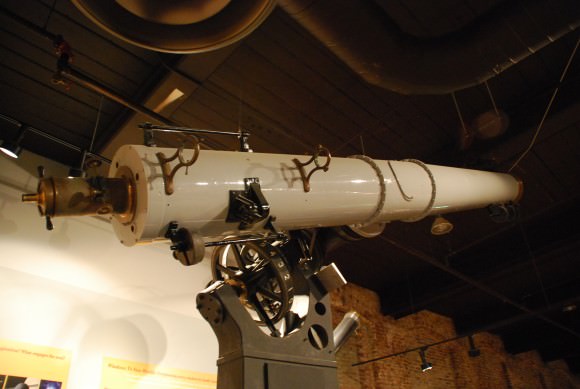
We first visited the South Carolina State Museum in 2012 when plans for the planetarium and observatory were just starting to come together. The large Alvan Clark refractor now in the observatory was on display in the main museum, but much of the telescopes in the museum’s collection of antique instruments and gear were yet to be seen by the public.
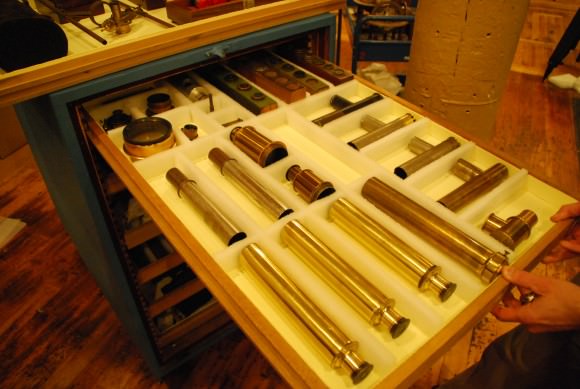
We firmly believe that a telescope out under the night sky is a happy telescope, and it’s great to see the old 12 3/8” Alvan Clark refractor in action once again!
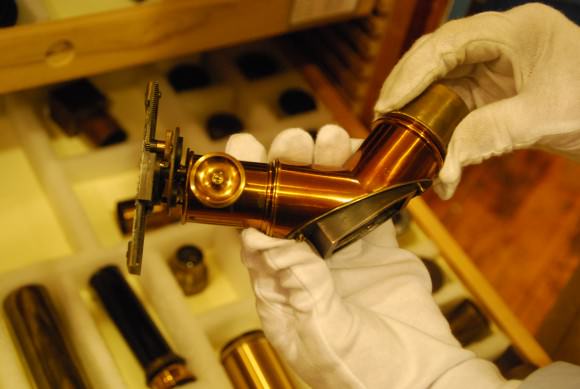
The expansion also includes a new display for the Robert Ariail collection, a fascinating assortment of astronomical instruments dating back to 1730. A highlight of the display is a 5.6-inch refractor designed by American optician and telescope maker Henry Fitz in 1849 for Erskine College. This stands as the oldest surviving American manufactured telescope known. The Robert Ariail collection is one of the largest collections of antique refracting telescopes in the world. We were amazed at the array of old solar projectors and filters, including some that we could not immediately identify.
Just how did some of those astronomers of yore observe the Sun other than projection? In some cases, they used smoked glass… but often, we learned at our behind the scenes tour at the South Carolina State museum in Columbia that they observed the Sun through an adapter filled with dark oil. No, don’t try this inconsistent and incredibly dangerous method of solar observing at home! We also noted that several of the solar filters were cracked, which no doubt occurred while they were in use.
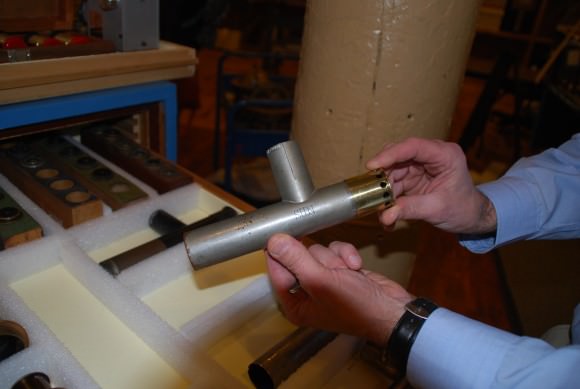
The Planetarium: The new planetarium is known officially as the BlueCross/BlueShield of South Carolina Planetarium, and the new 55-foot diameter digital dome seats 145 and is now running shows that cover art, science, history and — of course — astronomy. Laser light shows set to a modern rock soundtrack —cue pink Floyd’s Dark Side of the Moon, sides one and two — are also planned. And don’t miss the NASA gallery in the lobby to the planetarium which features artifacts from South Carolina hometown astronauts Frank Culbertson, Ron McNair, Charles Duke and Charles Bolden.
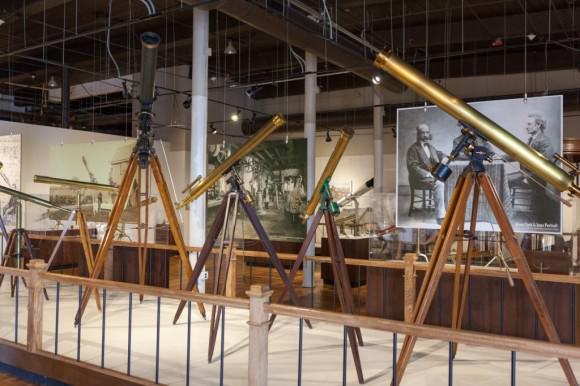
The Observatory: The Boeing Astronomical Observatory is now open for business and features the aforementioned Alvan Clark 12 3/8-inch refracting telescope. Built in 1926, this grand old refractor bespeaks of a bygone era when astronomers actually looked through telescopes, pipe in hand, atop some distant windswept mountain. Squint hard, and maybe you’ll spy a canal festooned Mars… OK, maybe that’s a stretch, but it’s amazing to look through one of these grand old instruments, in person. And the observatory is the only one of its kind in the United States (and perhaps the world) that will offer modern remote access to an antique telescope to classroom students.
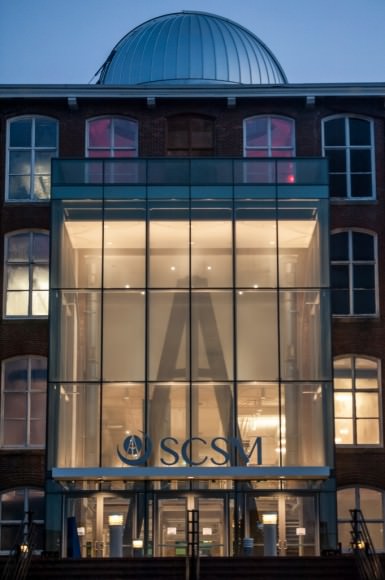
The observatory also includes a classroom, outdoor viewing terrace, and a modern state-of-the-art computer control system that those old “astronomers of yore” only wish that they’d had, especially when they had to manually crank up the mechanical counterweights on their clock drives!
Not only is the observatory open for night viewing — and just in time for the upcoming October 8th total lunar eclipse — but they’re also open to the public for daily solar observing sessions as well. And we promise they’re utilizing the very latest in solar safety technology… no overheating oil-filled filters allowed!
The 2017 total solar eclipse and the future: But there’s another reason to visit Columbia South Carolina about three years hence: the city and the South Carolina State Museum will once again be the center of astronomical action in less than three years time, when a total solar eclipse crosses the state from the northwest to the southeast on august 21st, 2017. Towns across the United States are already preparing for this celestial spectacle, and Columbia is one of the largest cities along its path. It promises to be a great show!
Don’t miss these exciting goings on in Columbia, South Carolina… the new planetarium and observatory is truly “brighter than ever” and out of this world!
Follow the South Carolina State Museum as @SCStateMuseum and the hashtags #scsm and #BrighterThanEver.

